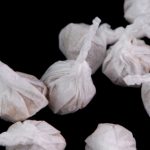
As we’ve written before, taking precious metals into a chemistry lab can yield some amazing transformations. Sometimes, these precious metal compounds are nothing like the original. In particular, one of silver’s transformations is like night and day – maybe even more drastic than that!
On its own, silver has anti-microbial properties that make it useful for creating sterile equipment or environments. It finds use in the medical setting preventing infections – saving lives. If you take it to a lab and turn it into silver fulminate, you’ll have one of the most unstable explosives known to man. That’s not exactly something you want near a hospital.
When silver metal is dissolved in nitric acid, the result is silver nitrate – a common starting point for creating many other silver compounds. If silver nitrate is mixed with ethanol, you get silver fulminate – which is so volatile and sensitive, it could have come from a Wild E. Coyote cartoon. What will set off silver fulminate?
• Heat
• Pressure
• Electricity (including static discharge from clothing)
• Impact (a feather brushing it, a water droplet falling on it, moving it, etc.)
• More silver fulminate (silver fulminate will detonate from the stress of its own weight if it exceeds a few milligrams)
Silver fulminate can’t be mass produced or transported because of the imminent explosion. It’s worthless, except for one practical use: bang-snap novelty firecrackers. How does that work? Find out in our next blog post!










